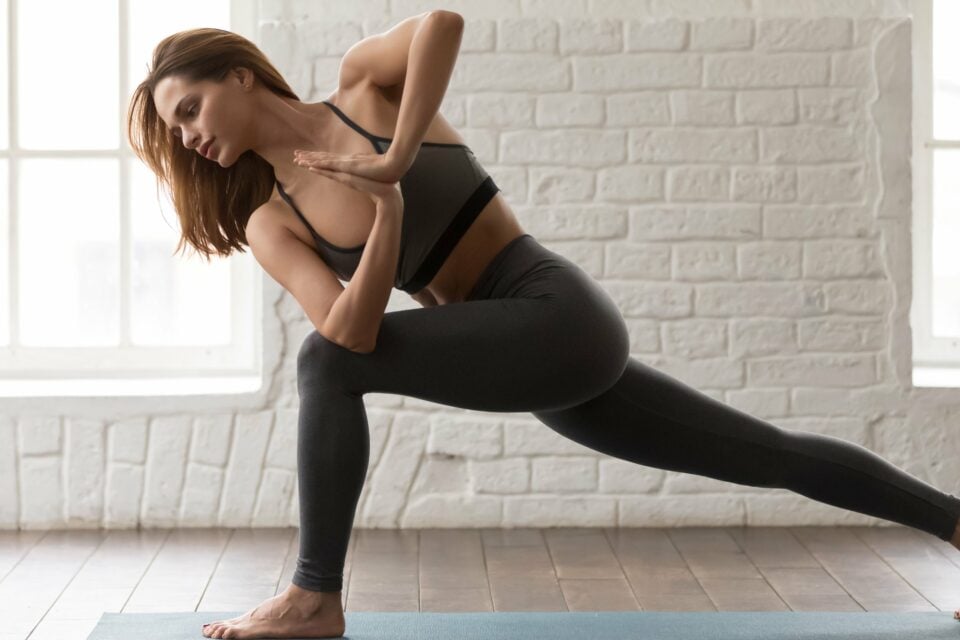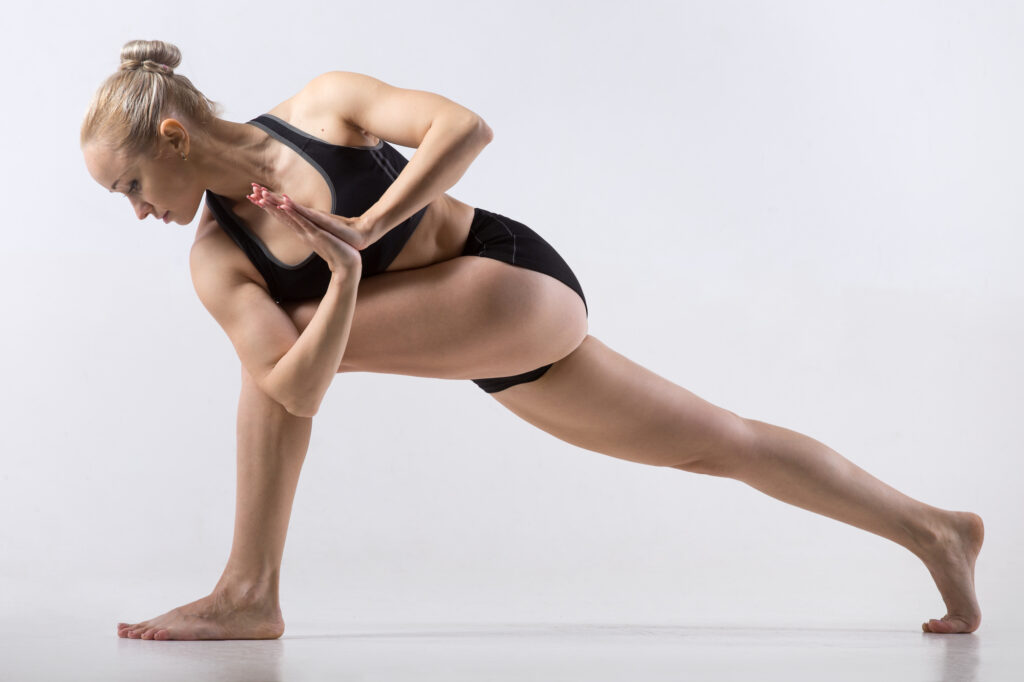A step-by-step guide to Parivrtta Parsvakonasana

Parivrtta Parsvakonasana is a challenging yoga pose, part of the first series of Ashtanga. Part of the family of twists, seems to have all possible benefits a yoga pose can gather, but conquer it is not an easy task.
Classified of intermediate level, Parivrtta Parsvakonasana is undoubtedly a challenging pose. One of those you keep thinking: “When will the teacher say to get out of it? I can’t handle it anymore. Ok, one more breath, but just one more.” Although, as always in yoga, there are multiple possibilities of variations for all types of bodies, capacities and limitations.
Receive all our tips by email!
Love Astrology? Subscribe Now and Receive Exclusive Content!
Ready to conquer Parivrtta Parsvakonasana? Let’s find out how!
Parivrtta Parsvakonasana, a step-by-step guide
Parivrtta Parsvakonasana is also known as the revolved side angle pose, it consists of a variation of Utthita Parsvakonasana. Every time the word “parivrtta” appears on an asana name we can expect a twist. Step by step, we tell you how to do this twist.
Previous pose
The first step always depends on the previous pose. There are many possibilities to enter in Parivrtta Parsvakonasana, just to share a few options, you can start either from Tadasana, Adho Mukha Svanasana, Virabhadrasana II, or even Utthita Parsvakonasana.
Entering the asana: the feet
The right foot must be out to the right in 90 degrees. The left foot turns slightly in to the right, so the heel is farther than the toes.
In this moment, it’s necessary to push the right knee outward and keep the knee in line with the feet.

The torso and the legs
As you exhale, turn your upper body to the right, until your torso is facing your leg. Bend your right knee as you exhale as bring your left hand to the floor, next to the right foot (on the inside).
Variation: in case you don’t have enough flexibility, lift your left heel of the floor to enter the position.
The arms
Keep the arms stretched and in the same line. Lift your right arms and if possible, look into your right hand.
Variation: if it hurts your neck, keep your look forward or down.
Going deeper
If the pose is comfortable at this point, you can go further. There are two steps more you can explore, remembering that by placing your left heel on the floor, the exigence will be much higher.
- Bring your left elbow to the outside of the right knee and your palms together, like Anjali Mudra. The down elbow points to the floor, while the up points to the ceiling. Keep your hands pressing against each other, to deepen the twist.
- If the previous option is still easy, you can bring the left hand to the floor from the outside of the right knee, and raise your right arm, keeping it in the same line.
The benefits of Parivrtta Parsvakonasana
Either you practice Ashtanga Yoga or any other practice that includes Parivrtta Parsvakonasana, approach this asana with patience and persistence. The revolved side angle pose takes time and commitment, but it has a set of benefits:
- Strengthens and stretches the legs, knees, and ankles;
- Stretches the lateral side of the upper body;
- Improves resistance;
- Boosts balance;
- Helps detoxing the body and the vital organs.
Enjoy the challenge and the process of achieving new stages in your practice!
You may also like:
- Ardha Ekapada Rajakapotasana: step-by-step of the Pigeon Pose
- Adho Mukha Vrksasana training in 5 steps [with pictures]
- A six step sequence to Ardha Chandrasana

